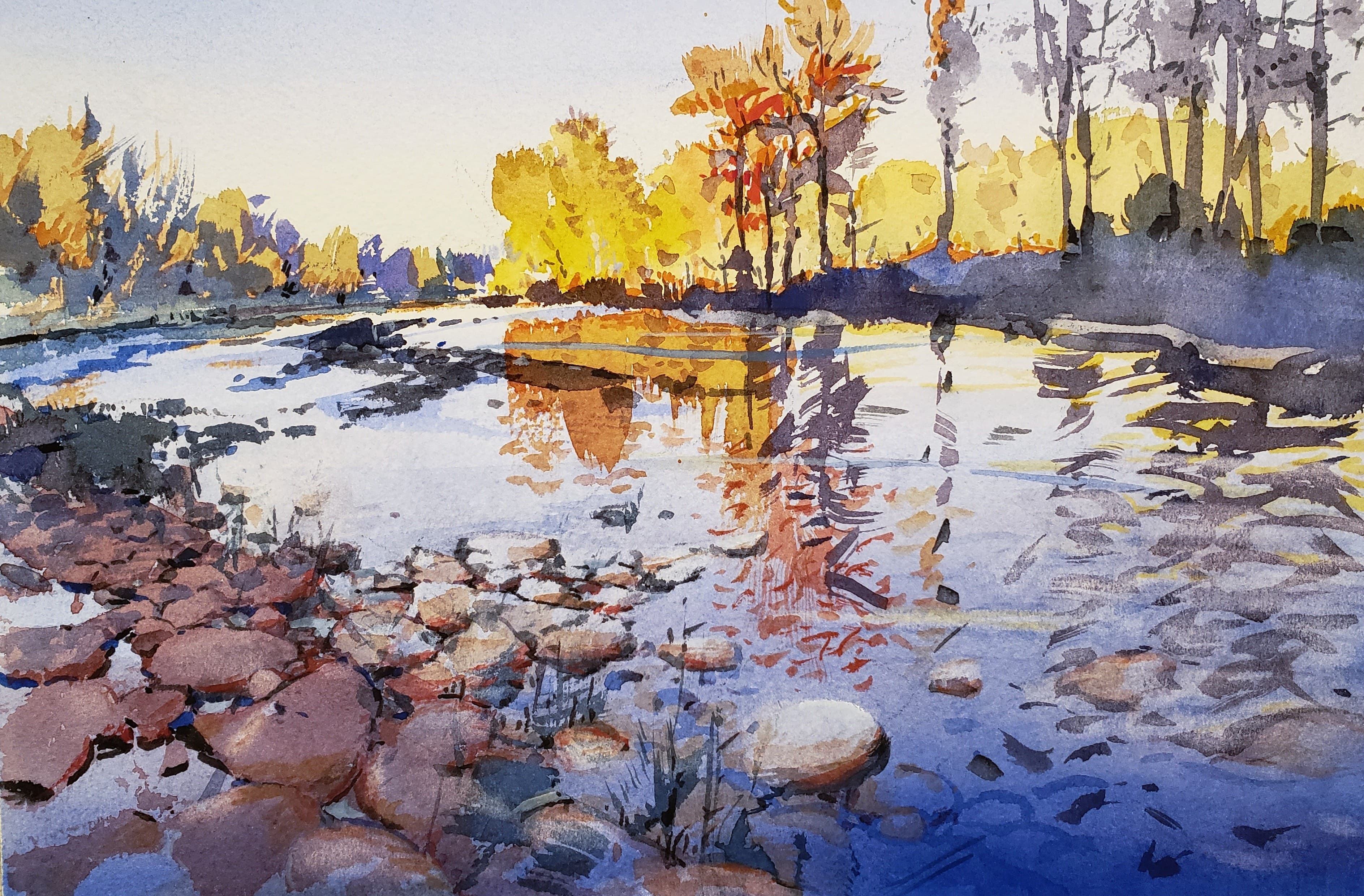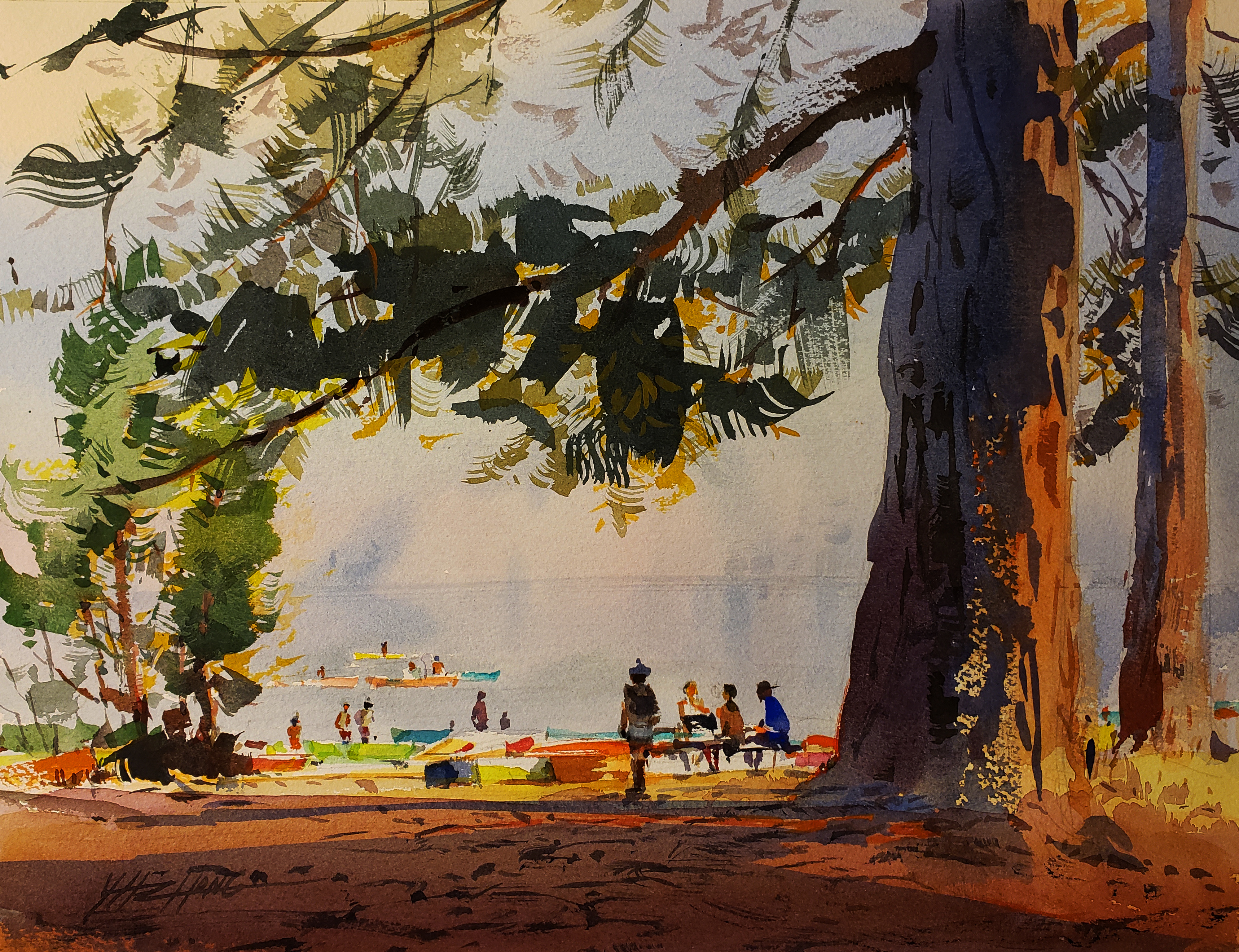
When students of Yong Hong Zhong marvel at his brushwork, the Portland-area watercolorist simply shrugs in response. It’s natural to him. He’s aware that assertively placing bold, dark, or saturated color in the middle of the composition can ruin all the previous work done on the painting. Still, he’s not afraid.
“You have to have an idea of what to say to begin with,” he says. “And then you can’t be timid in the way you use your design, your brushstrokes, or your values — especially in watercolor. Because the medium doesn’t leave a lot of room for correction, you have to be confident. You can even break the rules if you do it confidently. You can do things like place your subject matter in the very center of your paper. There will be a lot of mistakes and failures, but over time, your work will get better.”
In other words, don’t be afraid of mistakes, or of destroying your work on a piece to that point. Each failure teaches you more. And when a “mistake” is made, the mark can be used to the artist’s benefit.
Follow along as Zhong demonstrates his process. In Step 4, see how he used an errant mark to his benefit.
Watercolor Tutorial: Painting With Confidence

View of Scene
Zhong came upon this scene while he was participating in the Paint the Peninsula plein air event in Port Angeles, Washington. The competition was marked by thick, choking smoke from the California wildfires, but even in tragedy, an artist can find beauty. “Even though I felt guilty because the fires were so devastating, the sunsets at that time were just amazing,” Zhong says. Plus, the smoke simplified the visual elements and compressed the values.

Step 1
Largely because it was a demonstration, Zhong spent little time on the graphite drawing. He quickly moved on to wetting the entire paper and washing in the background using the wet-intowet method. He carefully brushed around some areas to retain the white of the paper in key spots.

Step 2
The artist waited for the wash to dry completely, as the edges going forward needed to be sharp. His marks at this point were immediately bold, with crisp lines and angles. He did this using a rather large round brush — a Chinese calligraphy brush that allows him to flatten it for such effects. “It’s similar to a round brush but allows you to get a more chiseled edge,” he says. This inexpensive brush also allows him to mix colors on the brush, so two colors go on the paper at the same time, in the same stroke. He was going for expressive strokes and colors here

Step 3
That bit of white near the center of the composition was then put to use. “This was a resort lake where you can rent kayaks, so I put in the table that the people renting kayaks used,” says Zhong. “The kayaks and the table provided scale, dark shadow, and intense color to create the focal point.” Some of the warm ground color was dragged up into the trunk of the primary tree to connect it with the earth.

Step 4
Zhong’s bold strokes mark this stage, with the dark of the foliage created with strong, sure brushstrokes. A mistake at this stage would be devastating. “Watercolor is about taking a chance,” he says. “I understand the risks of watercolor. All of the work I have done prior to this stage hinges on how the darks work out in this step. I can ruin the painting, but I just have to trust my pencil drawing and not worry about matching the scene too much. I have to believe it will work out fine, or that I can get out another piece of paper and try again.”

Final Step
Next, Zhong pushed back against the predominance of cool colors in the scene, taking advantage of the early morning sun to provide some warmth. “The warmth in the smoke enhanced the warm of the morning light,” he says. “It was actually a choking smoke, and some of the artists were wearing masks. I focused on getting the feeling down, accurately depicting the atmosphere and the values. When I was finished, I felt that I was able to capture the mood and condition of the scene.”








I follow Yong Hong Zhong on Instagram and his daily paintings always inspire! Thanks for sharing this look at his process!
So happy to see this progression. I too follow Yong Hong Zhong on Instagram and always enjoy the courage of his works. Thanks for featuring him!
You made beauty out of a tragic incident. Thank you for encouraging a bold approach. I think we watercolorists too often are so tentative that we let the message get lost. As my instructor once said, get in and then get out. I think you’ve illustrated that well